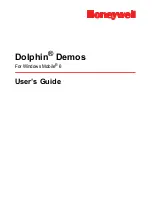
65
Programming Operations Guide
Chapter 1
Getting started with Unified Manager
This section provides you with information about the Unified Manager, the tool you access on the
Business Communications Manager from your desktop and use to configure system information.
This section describes the Unified Manager interface functions.
You access Unified Manager on the Business Communications Manager through the internet,
using a web browser. To access Unified Manager you require the IP address of the Business
Communications Manager, as well as a user name and password. If you do not have this
information, ask the person who installed your system.
This section includes information about:
•
“Computer requirements” on page 66
•
“Logging on to Unified Manager” on page 67
•
“Understanding BCM SSL certificate properties” on page 68
•
“Using the Unified Manager main page buttons” on page 72
•
“Using the Unified Manager” on page 80
•
“Using Unified Manager Help” on page 85
•
“Logging off” on page 86
•
“Using the SSH client to access the text-based interface” on page 87
•
“Manually activating Telnet” on page 89
Warning:
If the installer did not change the access password to the Unified Manager,
you should do so at the earliest opportunity. Refer to
“Managing access passwords” on
page 121
for procedures for changing passwords and adding new users.
!
Security note:
Multiple users logging on to the Business Communications Manager
with the administrator account, from different client stations, can cause inconsistent or
wrong configuration. Therefore, it is advisable to limit the number and distribution of
administrator accounts.
Security note:
The configuration section in the Unified Manager is not secured through
SSL encryption. To provide security for this section, establish a VPN client tunnel. Refer
to
“IPSec Remote User configuration” on page 784
.
Summary of Contents for BCM 3.7
Page 4: ...4 Software licensing N0008589 3 3...
Page 32: ...32 Contents N0008589 3 3 W 937 Index 939...
Page 46: ...46 Tables N0008589 3 3...
Page 64: ...64 How to get help N0008589 3 3...
Page 90: ...90 Manually activating Telnet N0008589 3 3...
Page 116: ...116 Delayed system restart N0008589 3 3...
Page 194: ...194 Configuring a data module N0008589 3 3...
Page 276: ...276 Setting line telco features N0008589 3 3...
Page 310: ...310 Using COS passwords N0008589 3 3...
Page 364: ...364 Enhanced 911 E911 configuration N0008589 3 3...
Page 380: ...380 Renumbering DNs N0008589 3 3...
Page 398: ...398 Saving wizard pages on your computer N0008589 3 3...
Page 458: ...458 Voice Mail settings N0008589 3 3...
Page 488: ...488 Setting system telco features N0008589 3 3...
Page 508: ...508 Other programming that affects public networking N0008589 3 3...
Page 522: ...522 PRI networking using Call by Call services N0008589 3 3...
Page 592: ...592 Monitoring Hunt groups N0008589 3 3...
Page 636: ...636 Configuring Double Density N0008589 3 3...
Page 640: ...640 Using the Network Update Wizard N0008589 3 3...
Page 666: ...666 Importing and Exporting DHCP data N0008589 3 3...
Page 722: ...722 Restarting the router N0008589 3 3...
Page 726: ...726 Important Web Cache considerations N0008589 3 3...
Page 748: ...748 Configuring an Interface with NAT N0008589 3 3...
Page 794: ...794 IPSec N0008589 3 3...
Page 818: ...818 Configuring the Policy Agent characteristics N0008589 3 3...
Page 832: ...832 Firewall rules for Business Communications Manager with Dialup interfaces N0008589 3 3...
Page 876: ...876 ISDN Programming N0008589 3 3...
Page 1004: ...1004 Index N0008589 3 3...
















































